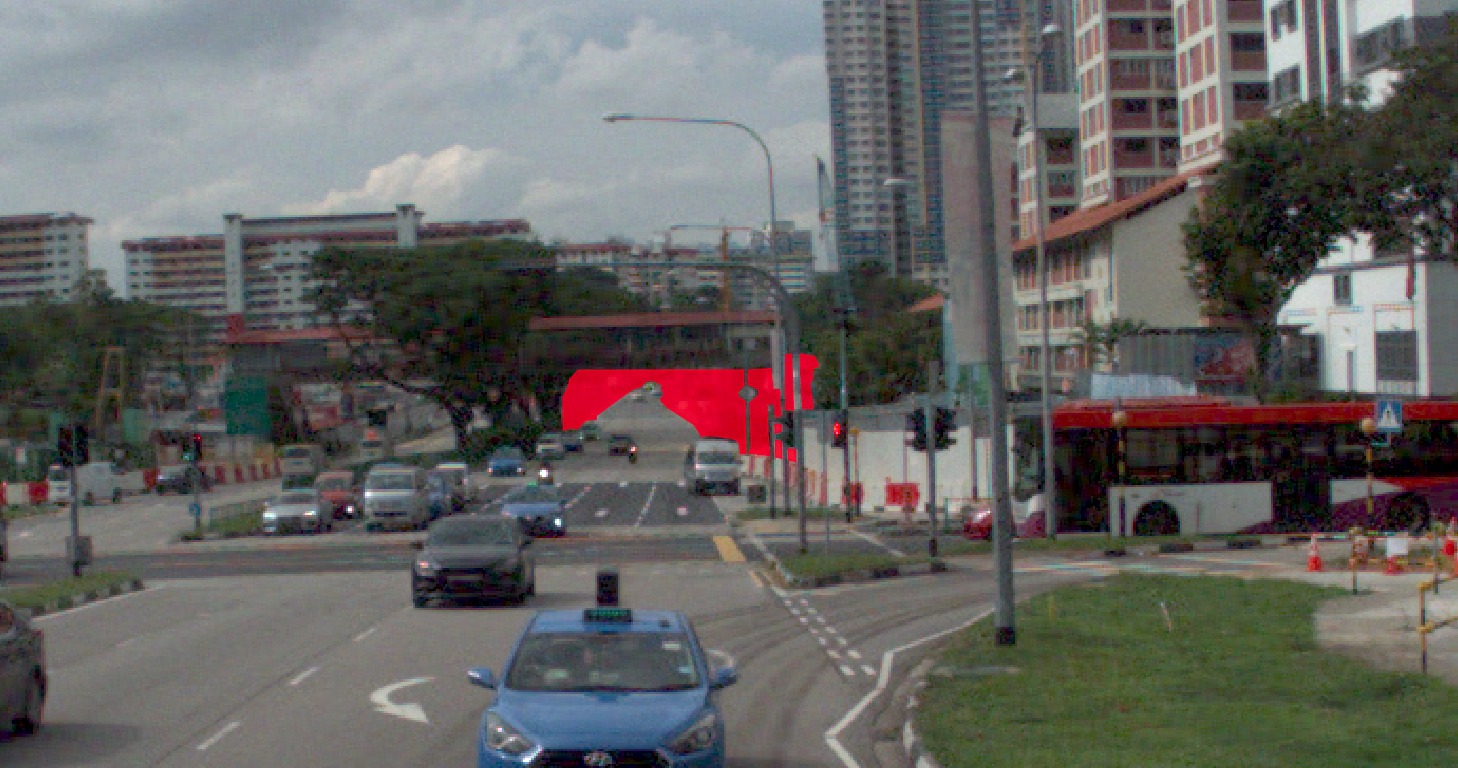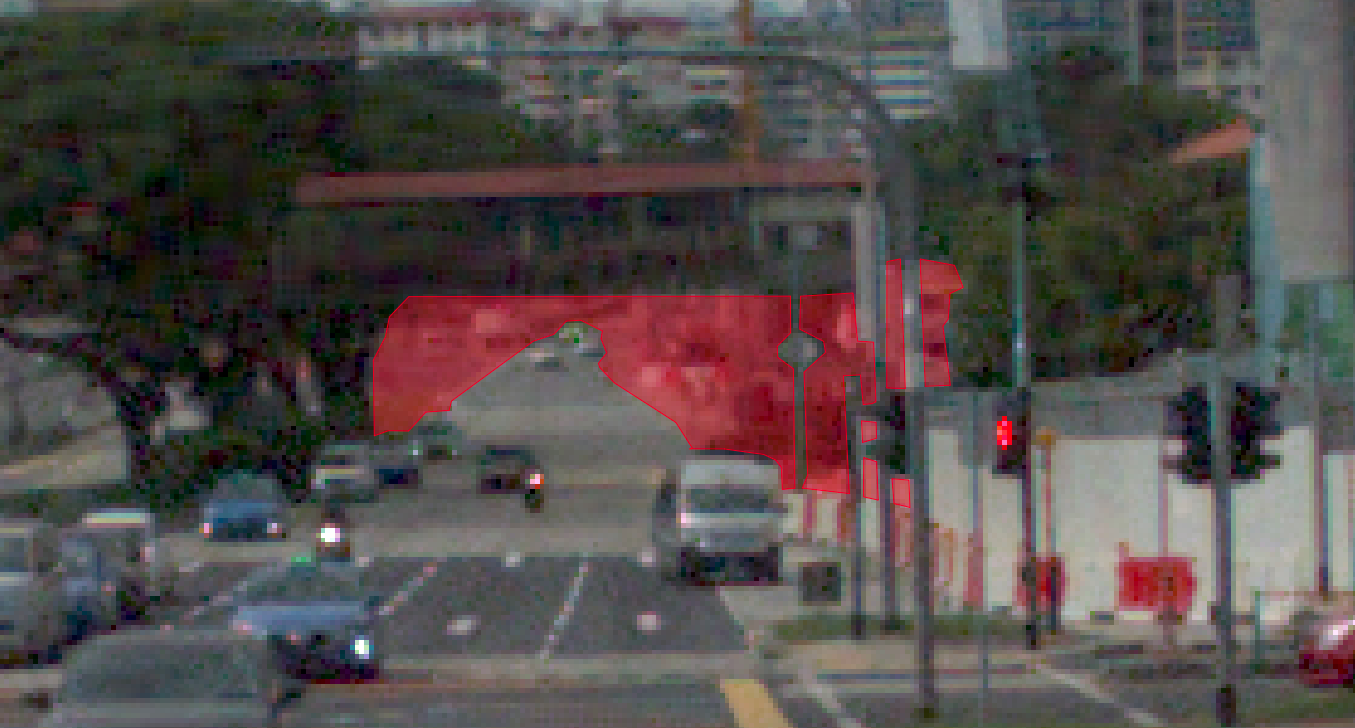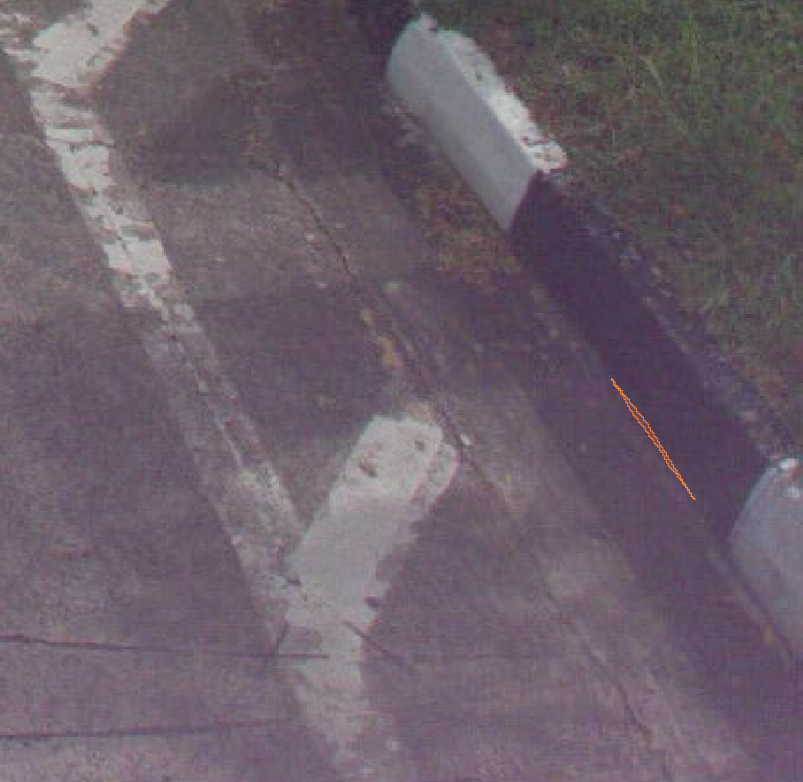Labeling¶
Semantic vs instance¶
Annotations are used for semantic segmentation purposes. Hence labeling each instance of the class is not necessary. A single polygon can be used to label the group of objects of a similar class:


An exception for the rule is the class Other since this class marks the area of uncertain type or class that can be introduced later.
Distant objects¶
Distant objects with hard to determine/unclear border should be labeled as Other. There is no need to make the best guess about object class:


The same should be done for the objects that don’t match any class or if it is not apparent which class to assign.
Accuracy¶
Here is an example of how accurate the manual labeling should be for the “Curb” class:

The labeling with not enough accuracy. Note that one vertex is inside the curb area, and another is outside of the curb:

Good labeling:

Such errors can be found automatically by model on the post-review stage. The misclassified area highlighted by model:

Template “Other”¶
Template polygon for class “Other” was created manually and covering the ego-vehicle parts present in each image. The same polygon was designed to cover ego-vehicle from different camera shots and may not be accurate in a particular image. Please do not modify the initially provided polygon, there is no need to fine-tune it.

